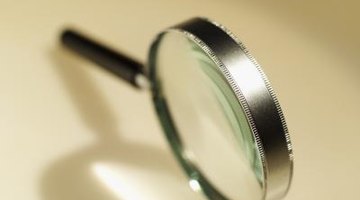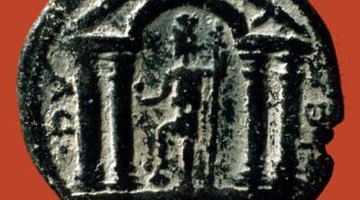Learning about or collecting coins is a good hobby, especially for aficionados who seek coins that don't go through the local bank branch: antique Roman money. Ancient Rome's practice of using money is reflected in modern-day society, which still uses coins as a form of currency. An important history lesson can come out of studying Roman coins.
Oldest Roman Coin

Roman coins date back to 211 B.C. Coins from this early period were made by a casting process that used lumps of bronze, called "Aes Rude." The bronze was melted and poured into a mould of the coin. However, due to the coins' heaviness, the practice was quickly discontinued. One of the earliest pictures on the coins depicted the god, Jupiter, and the hero, Hercules.
- Roman coins date back to 211 B.C.
- Coins from this early period were made by a casting process that used lumps of bronze, called "Aes Rude."
- One of the earliest pictures on the coins depicted the god, Jupiter, and the hero, Hercules.
Portraits

Many Roman coins have portraits on them of a human-face profile. The faces derive from important figures in the Roman Empire, founded in 753 B.C. Some Roman coins have the profile of gods, such as Venus, Mars and Jupiter. Other iconic faces were of rulers, such as Caligula, Augustus and the Caesars. There is also a Roman coin that depicts the new religion from the fourth century onward, which was Christianity.
- Many Roman coins have portraits on them of a human-face profile.
- The faces derive from important figures in the Roman Empire, founded in 753 B.C.
- Some Roman coins have the profile of gods, such as Venus, Mars and Jupiter.
Special Themes

Roman coins have special themes on them representing a god, leader, the currency amount and especially where the coin was made, to ensure that they were not fake. For instance, coins from the 4th century onward showed clear mint marks to indicate the city and workshop where the coin was made.
Storage

Hundreds of millions of coins were minted, as the Roman Empire spanned more than five centuries. This makes it relatively easy to find a Roman coin and begin a collection. Store Roman coins in their original mint holders or use quality archival-storage containers. When handling a Roman coin, hold it around the edges gently and do not touch the face of the coin, since most are more than 1,600 years old and are, therefore, quite fragile.
- Hundreds of millions of coins were minted, as the Roman Empire spanned more than five centuries.
- This makes it relatively easy to find a Roman coin and begin a collection.
